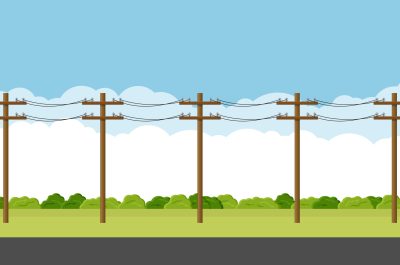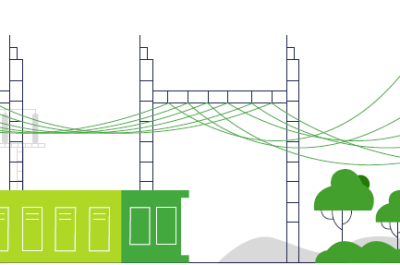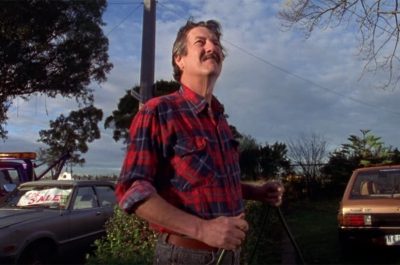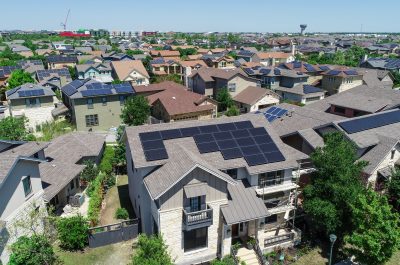Energy Networks 2018: Vision Critical Conference: That’s a wrap
Energy Networks Australia last week hosted its biennial conference, Energy Networks 2018 over two days in Sydney. While we hear plenty of talk about threats to the energy industry – and it is imperative to prepare for those possibilities – our conference also considered the myriad of positive opportunities. This week, we touch on some key themes and learnings from EN2018.
This year’s conference, titled “Vision Critical”, was instructive – and well attended with a record number of more than 900 delegates. Under the guidance of leaders in our field, we examined where we are, how we got here and how we can best map the terrain ahead to continue to deliver for our customers.
Delivering the opening address on day one, NSW Minister for Energy and Utilities, Don Harwin, launched a new NSW transmission strategy designed to connect renewable energy to the state’s electricity grid in a timeframe shorter than the Regulatory Investment Test for Transmission (RIT-T) approvals process.
The new strategy supports the development of three major renewable energy zones across NSW, with the objective of providing low cost, competitive generation.
Minister Harwin acknowledged that there had been a twenty-five per cent fall in network charges since 2013 in NSW – and indeed network charges have been falling nation-wide over the past five years – however there is still more for us to do to ensure customers receive best value for money.
The importance of lowering prices for consumers was the focus of the Federal Energy and Environment Minister, Josh Frydenberg, on day two of the conference.
Minister Frydenberg spoke about the challenges and opportunities being presented by a rapidly changing energy market and said the government was unapologetically focused on driving energy prices down.
He stated that for the federal government, the key issue was how to make a difference in this changing energy market to produce better outcomes for consumers.
Innovation and disruption visionary and former Premier of Tasmania, David Bartlett, delivered the conference’s ‘vision critical’ address. He encouraged networks to better understand energy consumers, to be able to predict behaviours and patterns early in order to anticipate market opportunity and talked about the need for our sector to design individual, tailored, flexible and responsive energy solutions that integrated technological advances.
The conference featured four plenary sessions over two days with expert national and international panelists from across the energy sector, discussing topics including the customer experience, the lessons learned from the challenges presented last summer, the future of the energy system and challenges and opportunities presented by the growth of solar and storage and other new technologies.
A series of concurrent sessions and operational forums were also held exploring a wide range of issues including cybersecurity, vegetation management, microgrids, innovation in regulation and network transformation.
The transmission and distribution of electricity is changing dramatically and Australia is in urgent need of a modernised energy platform.
A recurring theme at the conference was the requirement to innovate and collaborate to deliver the services our customers want and need – now, and into the future.
Phil Hirschhorn of the Boston Consulting Group addressed delegates with a historical example analogous to where we in the network business are now placed.
Frederick Tudor was a 22-year-old visionary when he dreamt up the scheme to harvest wintertime ice from New England and export it to the tropical French colony of Martinique where it could be used to cool drinks, preserve food and treat patients suffering from yellow fever.
The business model of the ice trade was simple supply and demand, but getting the product to market without melting was the challenge. When Tudor couldn’t find any merchant willing to ship frozen water, he bought his own fleet, and in 1806 set sail with 130 tons of ice cut from a pond.
The ice trade boomed and became a bedrock of 19th-century New England commerce. By 1856, almost 150,000 tons of ice a year left on ships from Boston to 43 foreign countries, including China, Australia and Japan.
In cities around the world, frozen water became a necessity. Natural ice was considered so essential that when warm winters and shipping problems caused “ice famines,” cities were thrown into panic. The American ice trade flourished well into the 1900s until electric refrigerators and freezers came of age in the 1930s and the ice trade was killed.
According to Phil Hirschhorn, the fundamental difference we in the energy sector enjoy that positions us differently to the ice trade is that customers can export. We must, he says, better position ourselves to provide that service.
A second point we have to our advantage is that technology is on our side. Early ice consumers lived in tropical climates where refrigeration didn’t exist and therefore, generation and storage wasn’t possible. In our modern day electricity world, the technology exists for household generation but has not yet made the grid redundant.
We can and should learn from industries and markets that have gone before us and either flourished with adaptive thinking and innovative approaches, or have floundered due to redundancy by technological advancement – as is the case with Tudor Ice.
With the development of the fridge – akin in the energy context to household distributed generation – the industry was essentially destroyed, ending the need for the ice delivery man, equivalent to our distribution networks.
We are living in the most momentous period of innovation the energy sector has seen since the days of Tesla, Edison and Westinghouse. These challenges will require just as much fresh thinking from policy makers as from energy network businesses themselves.
Energy Networks 2018 provided a valuable platform for discussion about how to navigate the transformation that is underway. Energy Networks Australia thanks all our speakers, delegates, sponsors and exhibitors and we look forward to coming together in Brisbane in two years for Energy Networks 2020 to continue the journey.



